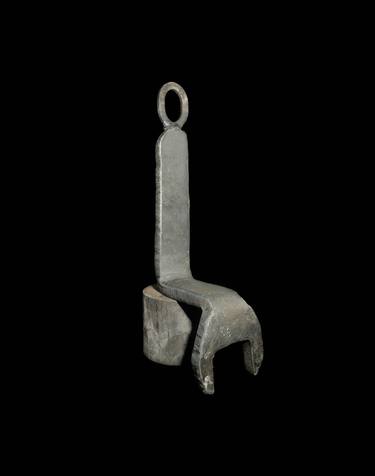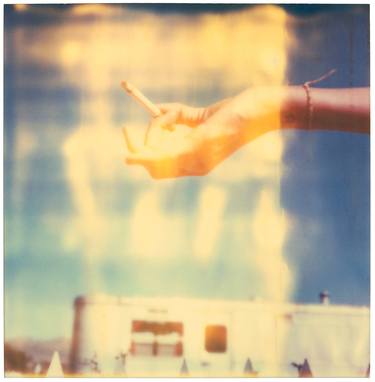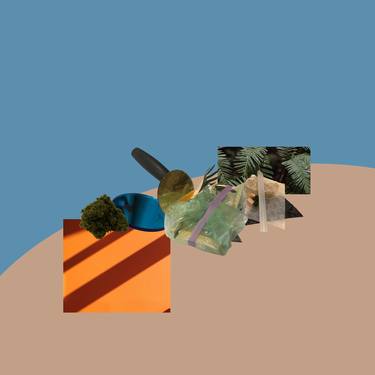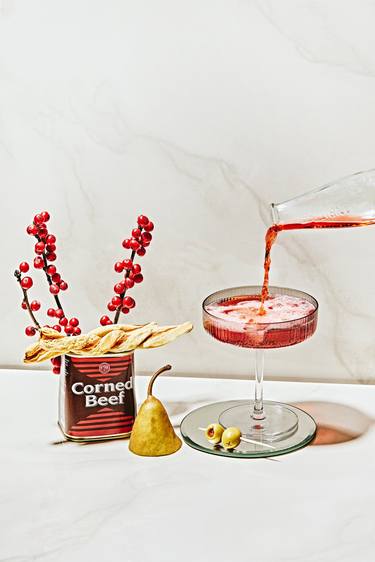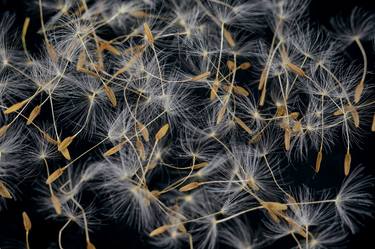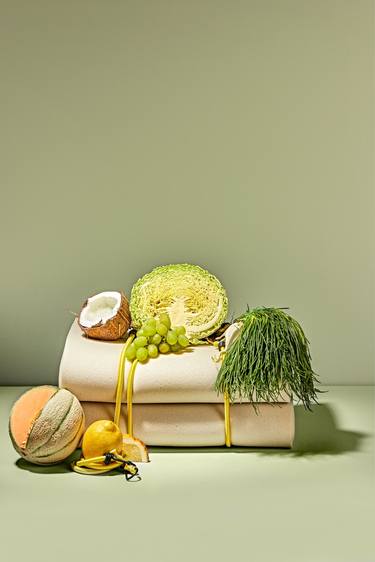- All Artworks
- Photography
- Still Life
Still Life Photography For Sale
Browse art and see similar matches
Try Visual Search
Category
Filter (1)
Filter
Category
Style
Subject
Medium
Material
Price
Size
Orientation
Color
Artist Country
Featured Artist
Beast's garden I - Limited Edition 1 of 5
Photography, 42.5 W x 31.5 H x 0.1 D in
Bulgaria
$940
SUPERNATURAL 6 - LARGE (Limited edition of 12)
Photography, 34 W x 45 H x 0.1 D in
Canada
$1,420
Golden Universe 2 (Frame Incl.) - Limited Edition of 2
Photography, 91.7 W x 62.2 H x 2 D in
Netherlands
$30,810
CameraSelfie #62 - Limited Edition 1 of 10
Photography, 39.4 W x 39.4 H x 0.1 D in
Germany
$2,300
Prints from $55
SUSPENDED ANIMATION 1 (Limited edition of 12 + 2 AP)
Photography, 32 W x 42 H x 0.1 D in
Canada
$1,320
BE THE LIGHT 4 - LARGE (Limited Edition of 12)
Photography, 32 W x 42 H x 0.1 D in
Canada
$1,420
CameraSelfie #44 - Large Edition 1 of 10
Photography, 39.4 W x 39.4 H x 0.1 D in
Germany
$2,340
Prints from $55
Emerging # 1 - Limited Edition 1 of 25
Photography, 11.8 W x 15.7 H x 0.1 D in
United Kingdom
$305
Photography, 15.7 W x 19.7 H x 2 D in
$4,020
CameraSelfie #97 - Limited Edition of 10
Photography, 39.4 W x 39.4 H x 0.1 D in
Germany
$2,310
Prints from $60
CameraSelfie #96 - Limited Edition of 10
Photography, 39.4 W x 39.4 H x 0.1 D in
Germany
$2,320
Prints from $65
Flick (The Girl behind the White Picket Fence)
Photography, 30.7 W x 29.9 H x 0.1 D in
United States
$2,870
Photography, 11.8 W x 15.7 H x 2 D in
Switzerland
$1,850
Dashboard Memories (The Girl behind the White Picket Fence) - Limited Edition of 10
Photography, 9.4 W x 7.9 H x 0.1 D in
United States
$430
Drop it like it's...whatever II
Photography, 15.7 W x 11.8 H x 2 D in
Switzerland
$1,850
Object Of Art And Altruism - Limited Edition of 10
Photography, 26.8 W x 31.5 H x 0.1 D in
$1,870
Sandwich - Limited Edition of 30
Photography, 19.8 W x 27.7 H x 1.2 D in
Switzerland
$1,490
CameraSelfie #98 - Limited Edition of 10
Photography, 39.4 W x 39.4 H x 0.1 D in
Germany
$2,310
Prints from $60
Uncertain Things (Phase 2) #7 - Limited Edition of 5
Photography, 15 W x 15 H x 0.1 D in
South Korea
$510
Prints from $100
Happy Hour, snitches. - Limited Edition of 30
Photography, 19.8 W x 27.7 H x 1.2 D in
Switzerland
$1,490
Photography, 19.7 W x 13.1 H x 0.1 D in
Colombia
$850
Prints from $86
CameraSelfie #19 - Large Edition 2 of 10
Photography, 39.4 W x 39.4 H x 0.1 D in
Germany
$2,340
Prints from $55
Orange II - Limited Edition of 30
Photography, 19.8 W x 27.7 H x 1.2 D in
Switzerland
$1,490
Dashboard Baby Doll - Limited Edition of 10
Photography, 10 W x 7 H x 0.1 D in
Mexico
$170
Prints from $40
CameraSelfie #70 - Limited Edition 1 of 10
Photography, 39.4 W x 39.4 H x 0.1 D in
Germany
$2,320
Prints from $55
CameraSelfie No. 85 - Limited Edition 1 of 10
Photography, 39.4 W x 39.4 H x 0.1 D in
Germany
$2,320
Prints from $65
Photography, 39.4 W x 39.4 H x 0.1 D in
$840
CameraSelfie #25 - Large Edition 1 of 10
Photography, 39.4 W x 39.4 H x 0.1 D in
Germany
$2,360
Prints from $55
butter up I - Limited Edition of 30
Photography, 19.8 W x 27.7 H x 1.2 D in
Switzerland
$1,490
Prints from $100
Sleepers (limited edition of 5)
Photography, 39.4 W x 55.1 H x 0.8 D in
Czech Republic
$4,270
Prints from $47
Photography, 78.7 W x 39.4 H x 0.1 D in
United States
$3,390
Photography, 39.4 W x 39.4 H x 0.1 D in
Germany
$2,310
Prints from $65
SUPERNATURAL 7 - LARGE (Limited edition of 12)
Photography, 51 W x 34 H x 0.1 D in
Canada
$1,420
Sticky sausages. - Limited Edition of 30
Photography, 15.7 W x 23.6 H x 0.4 D in
Switzerland
$1,260
Cheers to that Bitches - the bigger the better Version - Limited Edition of 20
Photography, 31.5 W x 47.2 H x 0.4 D in
Switzerland
$2,350
Cheers Bitches - the hot red framed edition
Photography, 15.7 W x 23.6 H x 2.4 D in
Switzerland
$1,810
Shell story in Californie Edition limitée de 5/ 20
Photography, 23.6 W x 23.6 H x 0.1 D in
France
$560
Prints from $100
Kentucky feels - Limited Edition of 30
Photography, 23.6 W x 15.7 H x 0.4 D in
Switzerland
$1,270
Cactus Cream 2 /40 Photography - Limited Edition of 40
Photography, 29.5 W x 29.5 H x 0.1 D in
$630
Mucho Bueno Mucho Pistache - Limited Edition 8 of 30
Photography, 20 W x 15 H x 0.1 D in
Mexico
$780
Prints from $100
Vanitas II - Limited Edition 3 of 20
Photography, 17.3 W x 17.3 H x 0.1 D in
Portugal
$390
hang up - Limited Edition of 30
Photography, 19.8 W x 27.7 H x 1.2 D in
Switzerland
$1,490
Prints from $100
BE THE LIGHT 2 - LARGE (Limited Edition of 12)
Photography, 32 W x 42 H x 0.1 D in
Canada
$1,420
I can't control myself. - Limited Edition of 30
Photography, 23.6 W x 35.4 H x 0.4 D in
Switzerland
$1,260
Studio still # 7 , Edition 1 of 7
Photography, 19.7 W x 15.8 H x 0.1 D in
Netherlands
$980
Photography, 19.7 W x 27.6 H x 0.1 D in
Italy
$740
Blow I - Limited Edition of 30
Photography, 19.8 W x 27.7 H x 1.2 D in
Switzerland
$1,490
Prints from $100
CameraSelfie #58 - Large Edition 1 of 10
Photography, 39.4 W x 39.4 H x 0.1 D in
Germany
$2,340
Prints from $55




